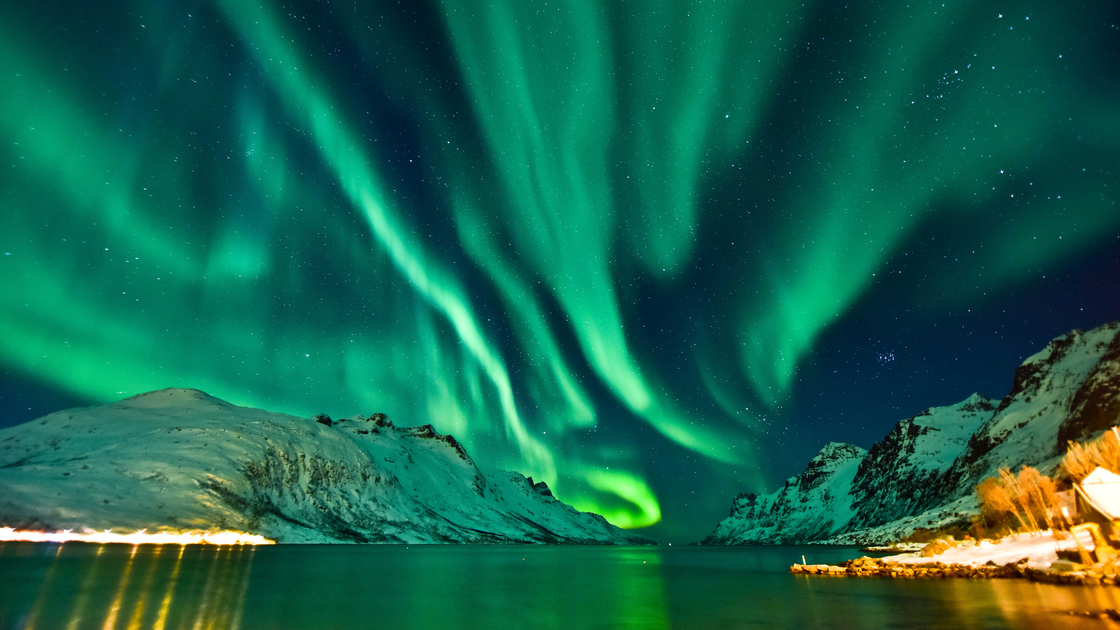It’s not unusual that this phenomenon is at the top of everyone’s bucket list of things to see. These colorful highlights in the sky have always been a topic of mystery throughout humanity’s existence. In the past, they were explained using speculative or superstitious reasoning. But these illustrations are not as mysterious as they seem. They are called auroras, and they are visible at both the northern and southern poles. In the Southern Hemisphere, they are called the aurora australis. In the Northern Hemisphere, they are known as the aurora borealis, named by the astronomer Galileo Galilei. Both light shows have danced their way across the night sky for thousands of years. And although the fantastic display is not as cryptic as it used to be, the aurora borealis still captures people’s attention—especially when it reaches its brightest and most active stage, which happens about once every 11 years.
The Cause
If you want the short story, the lights are caused by our Earth’s magnetic field intermingling with charged particles coming from the sun. If you want the long story, you’re in for a bit of a science lesson. Don’t start snoring yet.
Our sun hangs in the universe about 93 million miles away from where we are. It has storms on its surface that are caused by its magnetic fields twisting as the sun rotates on its axis. Those fields sometimes tie themselves into a chaotic knot and burst—creating a sunspot. Blasts of charged solar particles (made up of protons, electrons and ions) escape from the sunspot and hurtle through space, and if they are on the right path, they are destined to reach Earth after about 40 hours. Toward the end of their long journey, the particles enter into Earth’s atmosphere. And then … bang!
Just kidding—I’m just making sure you’re still with me.
When the charged particles from the sun and the atoms and molecules from our atmosphere meet, they get in a bit of a tizzy and become excited. What causes this excitement? I’m glad you asked.
Atoms have a center, or nucleus, and surrounding that nucleus are electrons. When the charged particles from the sun hit the atoms from Earth’s atmosphere, the electrons run frantically away from the nucleus. Then, when each electron gathers itself and calms down, it returns back to the lonely nucleus, and a particle of light is released. Simply put (ha!), the auroras are that process happening many times over.
The Colors
The colors accompanying the auroras are green, blue, yellow, pink, violet and sometimes orange and white. When the particles collide with oxygen, the aura given off is yellow and green. When they collide with nitrogen, red, violet and sometimes blue are produced.
Altitude also affects which colors are created. Blue appears when the collision happens up to 60 miles high, purple and violet above 60 miles, green is produced up to 150 miles high, and red above 150 miles.
The lights may show up as a stagnant band of color in the night sky, or they may manifest themselves as a dancing wave of color. Oh, and nighttime is the best time to see the lights—did I not mention that yet?
If you do want to see the dazzling lights and are currently searching for transport to either one of the hemispheres, keep in mind that predicting a light show is nearly impossible. It’s hard to know which direction the blast of particles from sun is headed until it reaches its destination, and sometimes it can end up being more of a fizzle than a light show. (I guess the electrons get more excited about certain atoms and molecules than others.) But if you’re really committed, plan a trip to Alaska or northern Canada during September, October, March or April—it’s said that these are the best months to view the aurora borealis. If you’re a real adventurer, Norway, Sweden, Iceland and Finland also offer some of the best seats in the house.
Not surprisingly, the auroras aren’t a specialty light show belonging only to Earth; auroras have been seen on Jupiter, Saturn, Uranus and Neptune as well. Still, the best chance of seeing them probably means staying here.
Most people think of the stars and moon when they think of the night sky. But there is so much more—as if floating planets and stars aren’t amazing enough! King David wrote in the first verse of Psalm 19 that the heavens declare the glory of God, and the firmament shows His handiwork. Even though the auroras seem like colorful, dancing lights to us, they are really a testament to God’s glory and powerful mind. If He created something as detailed as the northern lights, what else did He create that we have no idea about? It might take some searching and travel—like traveling to another hemisphere—but seeing natural wonders like this not only fascinating, but can also give us a glimpse into what we will be creating in the future.
So, what’s on your bucket list?
